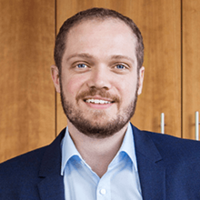
System architecture for the fourth industrial revolution
The economy is on the threshold of the fourth industrial revolution. Against the backdrop of the economic challenges in Germany, digitization in the manufacturing sector aims to enable manufacturing companies to successfully adapt to ever greater market volatility, new global competition, rising numbers of variants and increasingly customized products down to batch size 1.
Production plants that meet this challenge can only be realized through more efficient engineering and significantly increased adaptability. The significant reduction in change costs that this requires calls for new types of system architectures that focus on making production more flexible.
In the projects BaSys4.0, BaSys4.2 and BaSys4Transfer fortiss and its consortium partners are developing an open software platform for the realization of fourth generation production plants. The aim is to network and integrate existing technologies in such a way that Industry 4.0 applications can be realized. To this end, the consortium is developing not only an open-source platform for digital twins in asset administration shells, but also model-based techniques to automate or simplify the engineering of modern plant architectures based on them. In the final project BaSys4Transfer, the focus is now on the applicability and transfer of these BaSys results. Thus, the easy applicability in practice shall be further improved by an engineering and testing environment. This will be developed as open-source software and will thus enable small and medium-sized companies in particular to take the step towards system architecture for the production plants of tomorrow.
In the BaSys4Transfer project, fortiss is investigating methods for the automated exploration of production plants and their components in order to be able to take into account the flexibility and rapid changeability required in Industry 4.0 scenarios, already in early engineering stages for the system architecture. In addition to researching the mathematical processes required for this, semantically rich models must also be defined and used for this purpose, which represent the necessary data basis to enable automation and tool support in the first place.
In order to enable the applicability of these methods and models in practice, we consider the assurance of conformity and consistency of these models with other existing documents and artifacts as a second research focus in the project. Here, artifacts from specific tools for different aspects of the design of production plants (control electronics, software, geometry, ...) are to be considered, which arise in the course of engineering, as well as already existing documents and models which must be considered or are to be reused (Brownfield).
01.10.2022 – 30.09.2025
